5 Must-Know Hore Care Tips for Winter
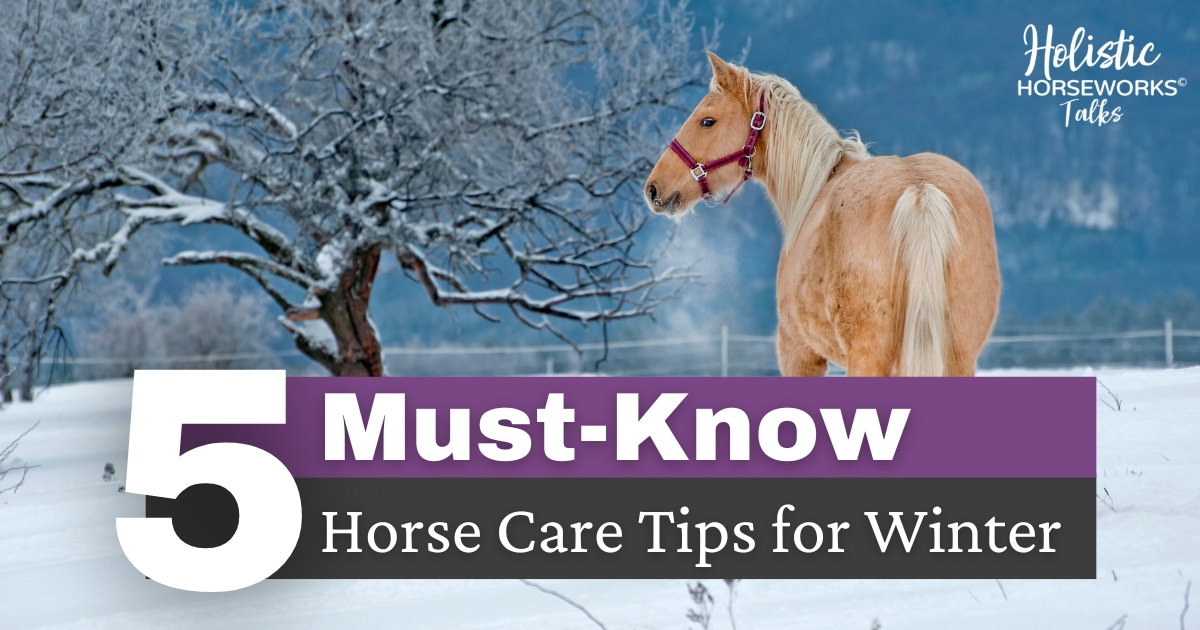
Share This Post:
As the days grow shorter and the temperatures start to drop, it’s time for horse owners to start thinking about how to best care for their equine friends through the winter months. With the right preparation and proactive steps, you can help ensure your horse stays healthy, comfortable, and thriving all season long.
In this comprehensive guide, we’ll share five essential cold weather horse care tips straight from the experts at Holistic Horseworks. Whether you’re dealing with freezing temperatures, icy conditions, or relentless mud, these strategies will help you keep your horse happy and healthy through even the harshest of winters.
Blanket Horses at Night When Temperatures Drop Below 45 Degrees
As the temperatures start to dip, it’s important to pay close attention to your horse’s comfort and ability to stay warm. If a horse has to shiver to stay warm, they are burning extra calories just to maintain their body heat.
This can be especially problematic during the winter months when hay and grain prices are already high. By providing a blanket for your horse at night when temperatures drop below 45 degrees, you can help them conserve that precious energy.
Of course, the ability to blanket at night may depend on your specific situation. Some horse owners who board their horses or have multiple pens may find it challenging to put blankets on and take them off each day. In those cases, investing in an automatic, heated water trough may be a better solution.
The key is to monitor your local temperatures and your horse’s behavior closely. If you notice shivering or other signs they are struggling to stay warm, a lightweight blanket at night could make a big difference in their overall health and comfort through the winter months.
Make Sure Horses Have Access to Unfrozen, Lukewarm Water
Another critical component of cold weather horse care is making sure your equine friend has access to unfrozen, lukewarm water at all times. Not only is ice-cold water physically uncomfortable for the horse, but drinking it can actually discourage them from drinking enough. Horses that don’t consume adequate water are at higher risk of impaction colic, as the lack of hydration causes the digestive system to slow down.
But it can be a real hassle to constantly break through ice that forms on top of water troughs, especially if you have multiple pens to maintain. To combat this issue, try investing in an automatic, heated water trough. This will keep the water temperature around 45–50 degrees, making it much more palatable for your horse. You can also try adding a bit of salt or electrolytes to their water (I like Dynamite Dyna Spark electrolytes), which can further encourage drinking.
For those times when you can’t provide heated water, offering a warm mash can be helpful. The warm, wet feed will help increase your horse’s overall hydration levels. Just be sure to monitor their water intake closely during the winter months.
Provide Warm Mashes with Electrolytes and Supplements
In addition to ensuring access to lukewarm water, I like to offer my horses a warm mash as part of their winter feeding routine. This can be an effective way to get more fluids into their system, especially if they are reluctant to drink enough on their own
 One of my favorite recipes is mixing a warm mash with ingredients like shredded beet pulp, timothy hay pellets, and a bit of an electrolyte supplement like Dynamite Dyna Spark. The warm temperature and added electrolytes can help stimulate thirst and keep the digestive system functioning properly.
One of my favorite recipes is mixing a warm mash with ingredients like shredded beet pulp, timothy hay pellets, and a bit of an electrolyte supplement like Dynamite Dyna Spark. The warm temperature and added electrolytes can help stimulate thirst and keep the digestive system functioning properly.
For older horses or those prone to impaction colic, you can even try adding a small amount of Epsom salt or sea salt to the mash. This can help draw more water into the intestines and prevent blockages. Feeding a warm, hydrating mash a few times per week, especially before any strenuous exercise, can be a game-changer for your horse’s winter health and comfort. Just be mindful not to let the mash freeze before they can consume it.
Prioritize Hoof Care in Wet, Muddy Conditions
While keeping horses warm and hydrated is essential during the winter months, it’s also important to maintain hoof health, even in the face of challenging, wet, and muddy conditions.
I’ve seen horses’ hooves rot away due to constant exposure to unsanitary, moisture-laden environments. To combat this in the past, I’ve used a diluted bleach solution to kill off harmful bacteria and thrush—around 1 teaspoon in a 16 oz water bottle as a makeshift hoof treatment. However, now I prefer a more natural solution, like my Hoof, Hand, and Ting Miracle Spray.
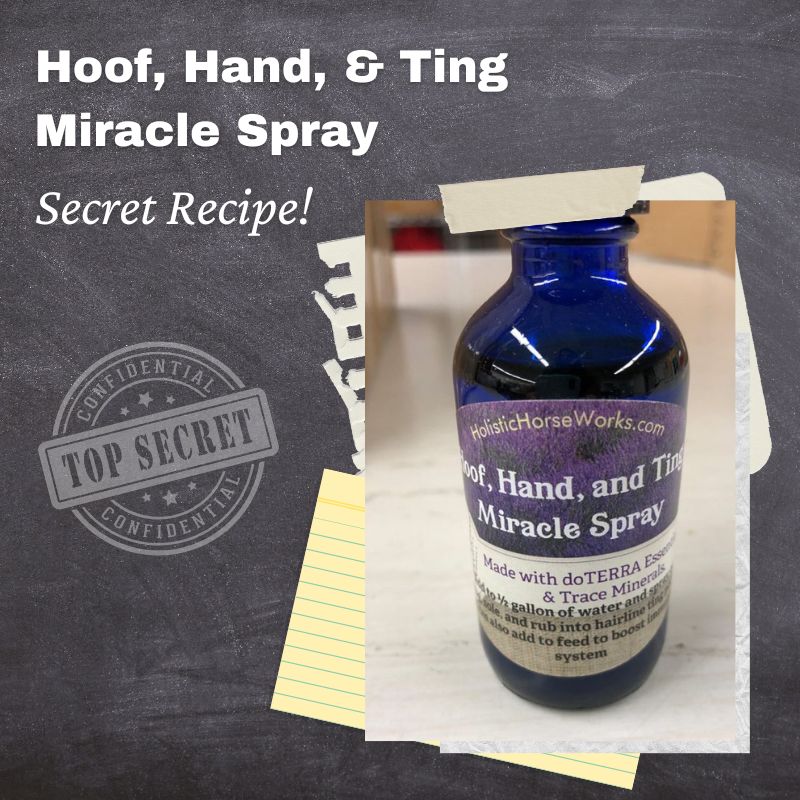 For horse owners facing similar muddy situations, I suggest being extra diligent about regular hoof picking and cleaning so you don’t get to that point. You may also want to consider using a topical hoof treatment or ointment to help protect the delicate frog and prevent further deterioration. The Hoof, Hand, and Ting Miracle Spray is also great for this.
For horse owners facing similar muddy situations, I suggest being extra diligent about regular hoof picking and cleaning so you don’t get to that point. You may also want to consider using a topical hoof treatment or ointment to help protect the delicate frog and prevent further deterioration. The Hoof, Hand, and Ting Miracle Spray is also great for this.
Neglecting hoof care can quickly lead to lameness, infections, and other serious issues. So be sure to make this a top priority, even when the weather makes it an unpleasant chore.
Keep Horses Moving to Maintain Circulation
It’s important to keep horses active and moving during the winter, especially older horses. As horses age, they can become stiffer and less inclined to get up and move around as much.
However, maintaining circulation and movement is crucial for their overall health and well-being. The “frog pump”—the natural pumping action that occurs when a horse walks—helps move toxins out of the legs and keep blood flowing.
To encourage horses to stay mobile, here are a few strategies:
-
Provide a warm, comfortable place for them to rest that is off the cold, wet ground
-
Incorporate light exercise and movement into their daily routine, even if it’s just walking around their stall or small paddock. You could also try the horse yoga routine
-
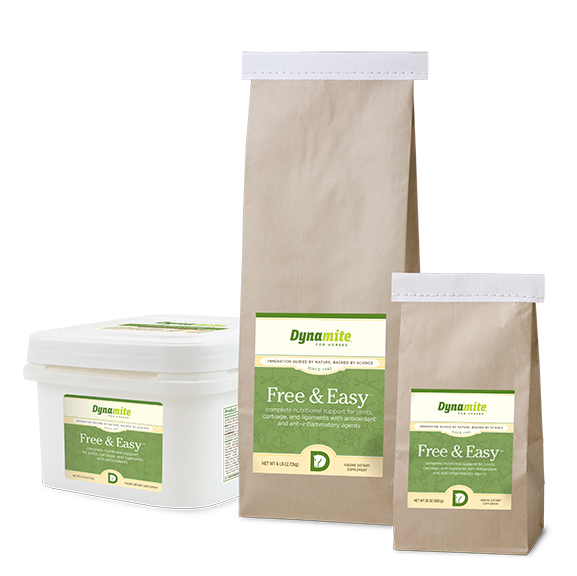 Offer supplements or treatments that can help reduce joint stiffness and pain, like Dynamite Free and Easy
Offer supplements or treatments that can help reduce joint stiffness and pain, like Dynamite Free and Easy
By making a conscious effort to keep horses active, you can help prevent circulation issues, muscle atrophy, and other problems that can arise from prolonged inactivity in the winter months
Prepare Your Horse for a Healthy, Comfortable Winter
As the temperatures start to drop and winter approaches, it’s important to take proactive steps to ensure your horse stays healthy, comfortable, and thriving through the colder months.
By following the five key tips outlined in this article—from blanketing at night to maintaining proper hoof care—you can help your equine friend conserve energy, avoid dangerous health issues like colic, and weather the winter season with ease.
Remember, every horse is unique, so be sure to monitor your individual animal’s needs and adjust your care routine accordingly. What works for one horse may not be the best solution for another.
With a little extra time and attention, you can help set your horse up for a safe, healthy, and comfortable winter.
🍎 Ready to Start Helping Your Horse?
Start with April’s foundational training, Equine Musculoskeletal Unwinding, available to learn online with live 1:1 support.
This step-by-step course teaches you how to release deep patterns of imbalance and pain—so your horse can move, feel, and live better.
Includes video lessons, downloadable workbooks, and a personalized distance reading from April herself.
Rather learn in-person?
Check out our hands-on equine remedial therapy clinics, available all over the globe →
More Holistic Horse Care Education
How a Distance Reading CHANGED Kimberly and Her Horse
In this interview, holistic healing expert April Love uncovers the deep, often invisible threads connecting horse and human wellness. Join Kimberly, host of The
Summer Travel Tips for Your Horse: Keep Them Happy, Healthy, & Hydrated
Traveling to summer shows and events can be exciting, but for our horses, it often comes with a heavy load of emotional and physical
Mud Fever Prevention and Remedies
Mud fever, also known as pastern dermatitis, scratches, grease heel, etc., is a common skin condition in horses caused by a combination of wet
Is It Really a Training Problem, or Is Your Horse in Pain?
If your horse bucks, resists the canter, or just feels off under saddle, the first thing many people assume is that it’s a training
Did You Know That Saddle Fit Issues Are Really Horse Body Issues?
Saddle fit isn’t just about the saddle — it’s about the ever-changing body of the horse beneath it. While it’s tempting to invest in
Useful, Helpful Tips and Tricks for Horse Care | April Love’s Interview on The Backyard Horse Enthusiast
What would you do if your horse was limping, colicking, or spooking—and no one could tell you why? That question lit a fire in
How to Find the Cause of Lameness in Horses
When a horse shows signs of lameness, pinpointing the exact cause can be challenging due to compensatory mechanisms. Horses often redistribute weight and movement
5 Must-Know Hore Care Tips for Winter
In this comprehensive guide, we'll share five essential cold weather horse care tips straight from the experts at Holistic Horseworks.Whether you're dealing with freezing
Dogs Love Bodywork, Too! (Prevents ACL Tears and Hip Displaysia.)
If you’ve ever watched your dog run and noticed something a bit off—like both hind legs moving together or noticeably dragging their toes—it might
Effective Pain Relief for Horses with Kissing Spine
Kissing spine sounds terrible and it can end your horse’s career by causing bucking or bolting under saddle which can be extremely dangerous to
Sign Up for Our Newsletter




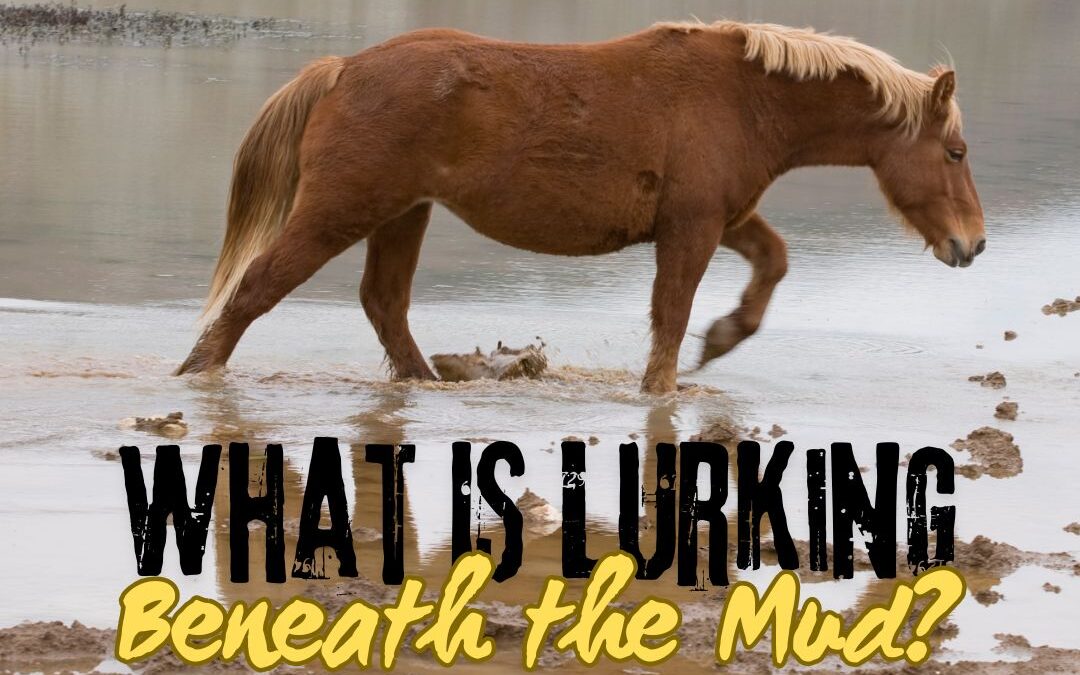


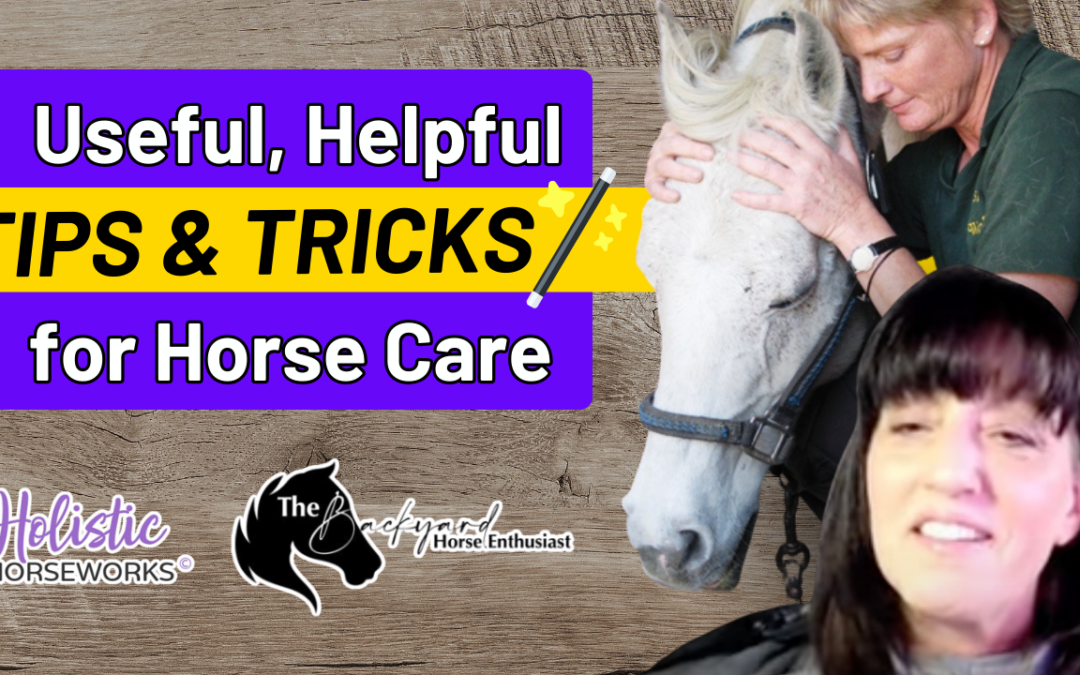
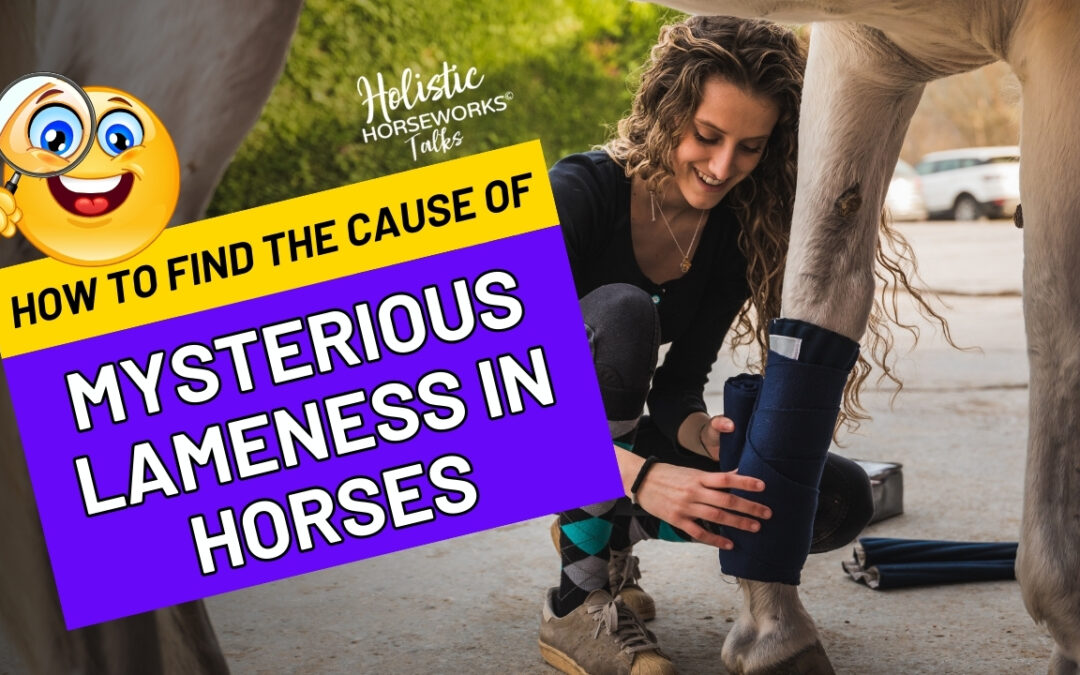

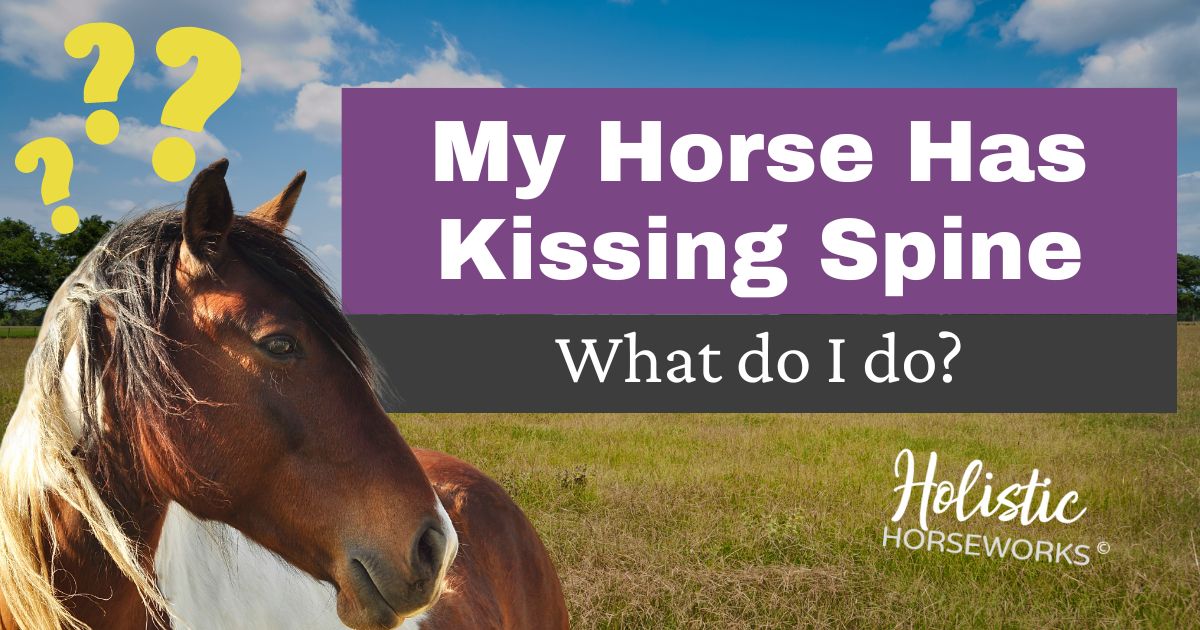

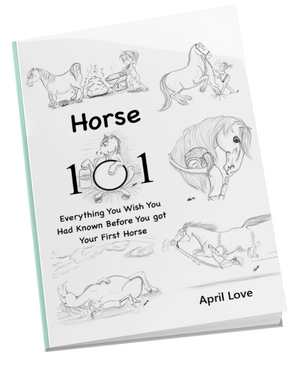
![Complete Level 1 & Level 2 Home Study + Private Training Package [NO DVD]](https://holistichorseworks.com/wp-content/uploads/2022/08/Level-1-and-Level-2-complete-home-study-and-training-package-400x400.jpg)
![Level 1 "Equine Musculoskeletal Unwinding" Home Study -Watch Instantly [NO DVD]](https://holistichorseworks.com/wp-content/uploads/2022/08/Level-1-Home-Study-400x400.jpg)
![Level 2 “CranioSacral Unwinding & Advanced Applied Kinesiology” Home Study - Watch Instantly [NO DVD]](https://holistichorseworks.com/wp-content/uploads/2022/08/Level-2-Home-Study-400x400.jpg)




![Equine CranioSacral Energy Work -Watch Instantly [English and French]](https://holistichorseworks.com/wp-content/uploads/2022/09/equine-cranial-sacral-energy-work-watch-instantly-400x400.jpg)